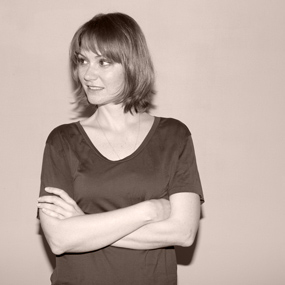Camp Design Gallery thrives at the nexus of crafted, critical, and collectible
The Futurists—Part 1
In celebration of the 2017 edition of Salone del Mobile—as the international design community scans the horizon for what’s new this year—Pamono proudly presents a five-part series on emerging voices in contemporary design. We kick off with a profile on Beatrice Bianco and Valentina Lucio, the founders and curators behind Milan’s cutting-edge Camp Design Gallery.
**********
“‘Art furniture’ is a detestable moniker,” writes LA designer Matthew Sullivan in a short essay about Italian radical artist-designer Ugo La Pietra. “It carries in it a sense that said pieces are not quite art and not really furniture—either art is slumming or furniture is longing.” What Sullivan gets at so well is that, despite decades of practice, words continue to fail us whenever we try to discuss these in-between objects. Any vocabulary we employ to describe things that can be both utilized and contemplated seems destined to fall back on biased hierarchies held over from a long time ago, when decorative became a dirty word and art could no longer serve a useful purpose beyond being itself.
If there is one thing that Italian gallerists Beatrice Bianco and Valentina Lucio are most passionate about, it is their desire to break free from such old paradigms. The duo focuses on hard-to-explain furniture, lighting, and decorative objects, with their sights set on erudite collectors rather than the mass market. They’ve been working in this rarefied world for years, first as assistants to other accomplished gallerists, and, since 2015, as gallery owners themselves. Bianco and Lucio chose the name “Camp” precisely because they embrace contemporary design that has an air of the theatrical, the fearlessly urbane—in their words, “ironic dandyism.” They strive to support designers, artists, architects, and artisans in their research, whatever form the final pieces may take, the more unique the better. This, for them, is what’s most exciting in contemporary design.
As multidisciplinarians, Bianco and Lucio cite a wild range of sources for their inspiration, from the anonymous ancient Greek ceramist known as the Dipylon Master to American Minimalist artist Donald Judd. Closer to home, the aforementioned Ugo La Pietra, who works across art, architecture, design, and academics, has served as an instructive model, along with other late-20th-century pioneers in Italian “art furniture” like Annibale Oste and Riccardo Dalisi. The connection between Oste and the Camp Design Gallery duo is particularly evident, given their shared reverence for craftsmanship and commitment to collaborating with experienced artisans.
In a short period of time, Bianco and Lucio have put together a unique and impressive roster of collaborators, including American artist David Lindberg, Austrian designer Felix Muhrhofer, Italian architectural design studio Analogia Project, and Israeli self-proclaimed “Designtist” (designer + scientist) Omer Polak. This is not a place you’ll find the same old, same old. And the quality of production is uncommonly high. Though the designs come from a broad range of international talents, the final pieces are typically handcrafted in Italy or Poland by experts specializing in each material.
“We love being a bridge between artisans and artists,” explains Lucio. “Too often these two worlds are very different and very closed. What we do is connect them, so the artist can appropriately express a manual language and be in close contact with the materials in question.”
“We think the role of the gallery is to be an incubator for new ideas,” adds Bianco. “The result is contemporary collectible design that expresses a dialectic between functionality and concept. Each project is focused on telling a story through a personal interpretation of contemporary aesthetics. In this way, we are working to create a new space for design, where it truly mirrors the complexity and interconnectedness of the world today.”
In addition to its exhibition and sales program, Camp Design Gallery also serves as a consulting agency to young designers who are just starting to navigate the field. “In parallel to the gallery activity, we have created a kind of coaching and orientation service, along with personal analysis of the portfolio,” Bianco says, “to help young talents better approach the intricacies of the design panorama nowadays. We give them suggestions in terms of production, image, strategy, promotion, collaborations, and more.”
After wrapping up a show of new lighting objects by Italian artist Paolo Gonzato—consisting of deliciously glossy, corrugated glass pieces—Bianco and Lucio are gearing up now for their next Salone project. They’ve partnered with curator-writer Marco Sammicheli (another sparkling new voice in contemporary design) to launch a new collection by London designer Adam Nathaniel Furman. Though full images have not yet been released, the show promises to be a visual feast while challenging easy, familiar definitions of design. If you’re in Milan for Design Week, be sure to put this on your must-see list.
* Keep an eye out for the next stories in our Futurists series, where we’ll spotlight the work of design collective Form & Seek, editor-organizer David Heldt of Connecting the Dots, creative director Lou Weis of Broached Commissions, and curator Annalisa Rosso.
-
Text by
-
Wava Carpenter
After studying Design History, Wava has worn many hats in support of design culture: teaching design studies, curating exhibitions, overseeing commissions, organizing talks, writing articles—all of which informs her work now as Pamono’s Editor-in-Chief.
-
More to Love
Ceramic Parrot from Botteganove
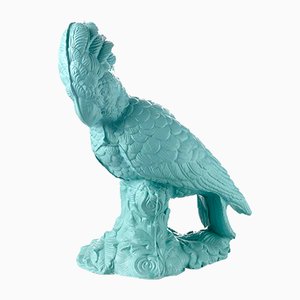
Bryophyta Vase in Dark Blue by Piloh

Bubbles Table Lamp by Studio Superego for Poliedrica
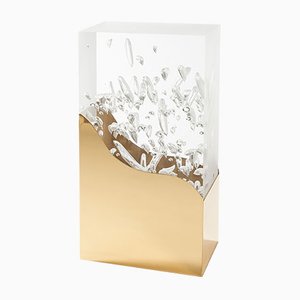
Slipper Chair in Aluminum by Mark Brazier-Jones
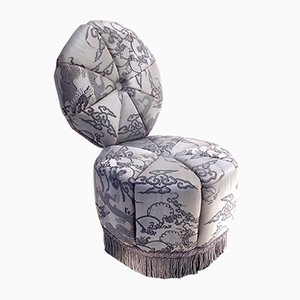
Square Splat Tapestry Pillow by Martyn Thompson Studio
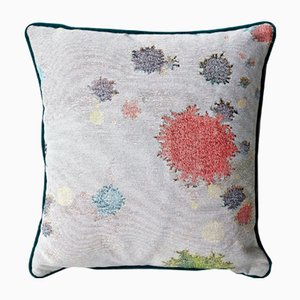
Splatter Lumbar Tapestry Pillow by Martyn Thompson Studio

DNA Cast Acrylic by Studio Superego for Poliedrica

Blue Hour Throw by Merel Karhof and Yasmijn Karhof for the Textile Museum Tilburg

Jaco 35 Lamp by Piloh

Bryophyta Vase in Orange by Piloh
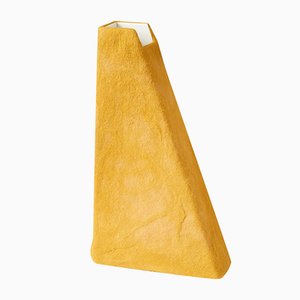
Positive Vase by Snarkitecture for 1882 Ltd
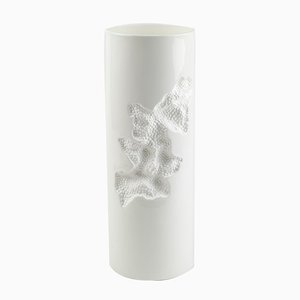
Lapis Lazuli Lamp by Studio Superego

Bestiary Console by Analogia Project for Camp Design Gallery

Bestiary Mirror by Analogia Project for Camp Design Gallery

Ritmo e Colore Red Bowl by Paolo Spalluto for Camp Design Gallery

New Surface Strategies Armchair from Soft Baroque, 2015

New Surface Strategies Chair from Soft Baroque, 2015

New Surface Strategies Bench from Soft Baroque, 2015


